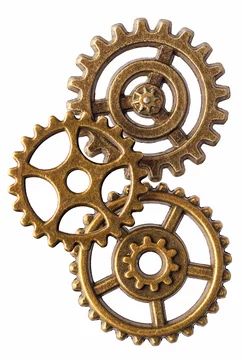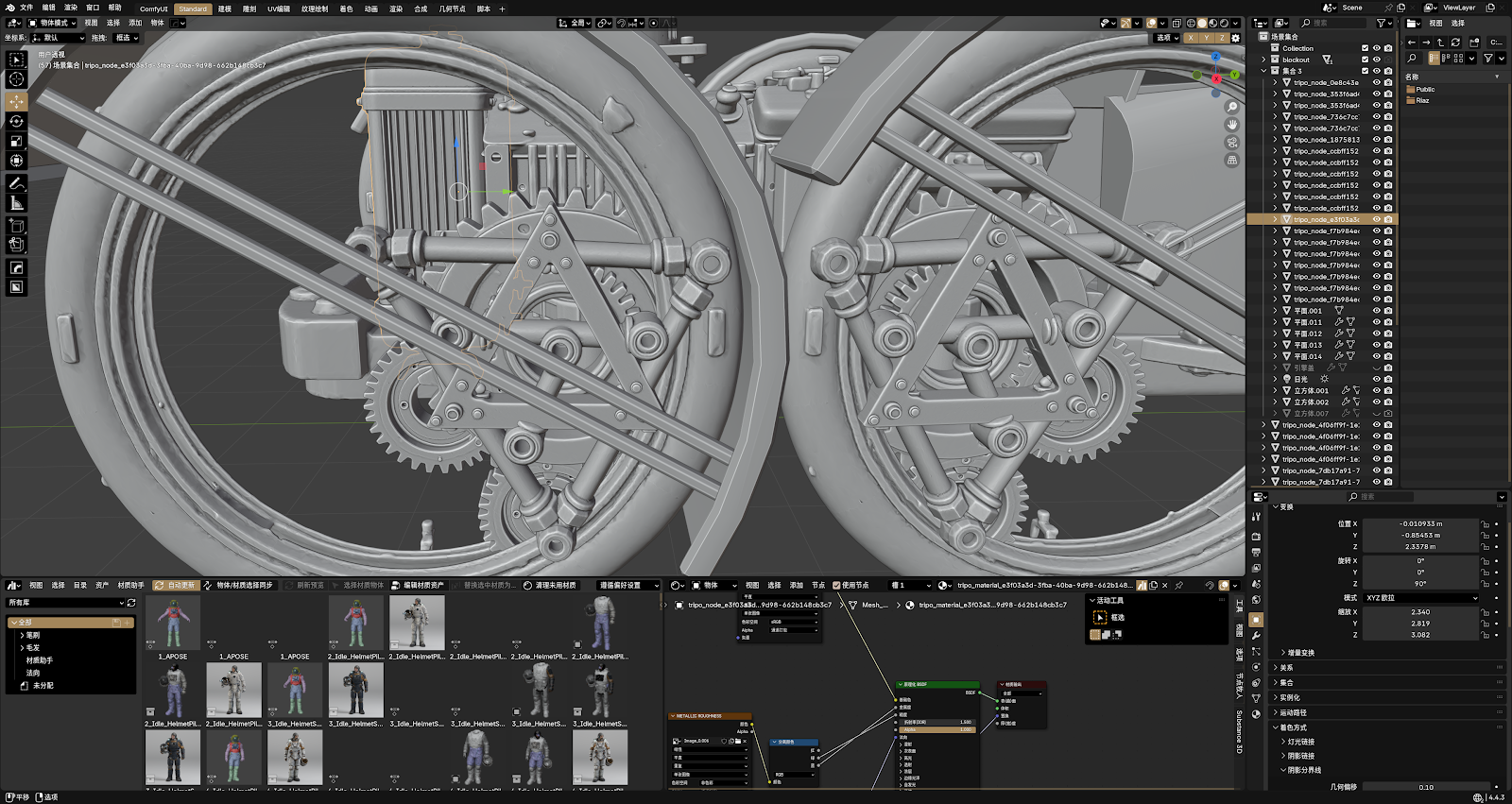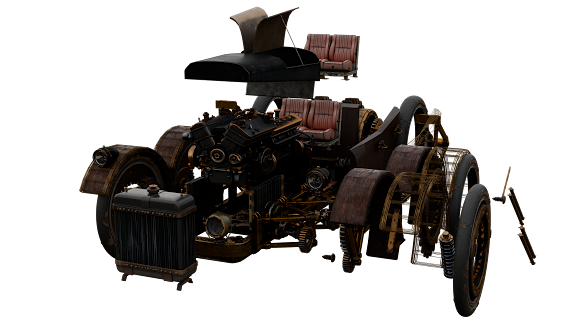Vehicle and Props Design
TAO YUZE 0366967
Bachelor fo Design (Honours) in Creative Media
Project1
In Project 1, I decided to create a land vehicle. In fact, I have created several complete works since the beginning of this semester. I chose my favorite one as the submission for Project 1.
I received a game with the art style of the game "Dishonored 2", especially the design of the carriage in the game. I really like the spokeless wheel design. I plan to combine it with the design of the double front axle car in Cyberpunk 2077 to create a retro and avant-garde high-performance land vehicle with a clockwork punk style.
I used a unique workflow to create this work. First, I used blockout to determine the general proportions and location of each part. Then I looked for pictures of the corresponding parts in the required positions. I then used scanning programs and AI models to convert the pictures into rough models, so as to quickly build complex concept art works. For special structures such as the car shell, I manually modeled them.
For the frame, I used AI to generate some random metal frame images and combined them with the scanned models to make them into kitbashs.
This workflow idea comes from the course of British concept designer Gavin Manners.
This is an avant-garde way to create concept art, which can significantly reduce the time spent on the image to modeling process, allowing creators to focus more on the design itself.
Here I use hunyuan3D and tripo as tools(All models are open source AI models and meet commercial-grade open source standards)
And pictures from the Internet cannot guarantee the color consistency, otherwise the work will look like Frankenstein
In terms of material processing, I did "fake PBR" processing on some models with original image materials (generated by scanning model software), which usually only have image materials, without layers such as roughness and metalness. So I separated the image material into different color channels in blender and connected them to roughness and metalness, and connected the displacement channel to add some details.
For the shader, I chose glossy BFDS instead of principled BSDF, because glossy BFDS can better enhance the metal texture.
For some assets that didn't come with a material or the material was hopeless, I completely repainted them using substance painter. My material design language was: brass/antique bronze material with distressed black paint. Basically I chose to mix several copper materials and added a layer of pure black image material with a noise mask.
FINAL OUTCOME
Kitbash can only fill in some fixed objects in reality, such as engines, gears, springs, etc. But the shell and frame parts must be modeled manually. I used the wireframe modifier to make the surface details richer.
FINAL OUTCOME
Kitbash can only fill in some fixed objects in reality, such as engines, gears, springs, etc. But the shell and frame parts must be modeled manually. I used the wireframe modifier to make the surface details richer.
Post Production and Profiling










































评论
发表评论